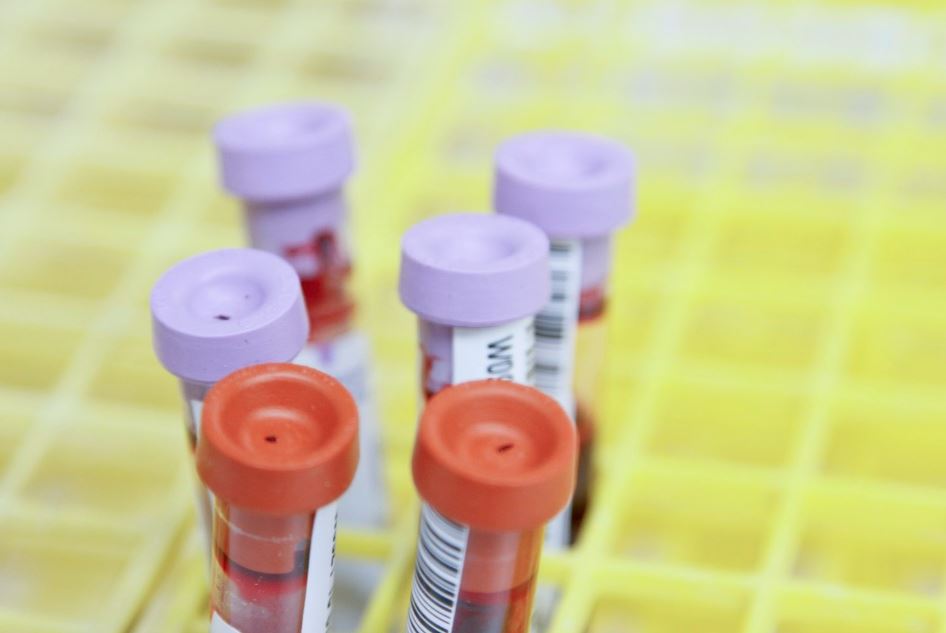Key Takeaways
- The CDC now encourages doctors to discuss with patients about potential exposure to PFAS and to determine if blood testing would be beneficial.
- PFAS, known as “forever chemicals,” are linked to serious health conditions, including kidney cancer and decreased birth weight.
- Some advocacy groups say the federal agencies should have more strongly recommended PFAS blood testing, especially for communities with high levels of exposure.
In an updated guidance, the Centers for Disease Control and Prevention (CDC) now encourages healthcare providers to have discussions with patients about potential exposure to PFAS and to determine if blood testing would be useful.
This is the first time the CDC and the Agency for Toxic Substances and Disease Registry (ATSDR) have updated their clinical recommendations for PFAS testing since 2019.
The guidance now states that “testing may help some individuals understand if they are exposed to certain PFAS and help guide exposure reduction.”1
The guidance now provides information to help clinicians weigh the benefits and risks of PFAS blood testing based on the patient’s exposure
However, the agency also notes that the “PFAS blood test will not provide information to pinpoint a health problem and will not predict future health outcomes.”1
Some community organizers say the update doesn’t go far enough in representing the importance of PFAS blood testing for communities with high exposure to the chemicals.
“We’ve advocated strongly for years for updated medical guidance that follows the science, will help inform providers, and provide guidance on how to monitor the health of those most impacted by PFAS exposure.
I was disappointed to learn that the new ATSDR guidelines both omit key medical advice on this topic and fail to meet the needs of people exposed to PFAS,” Andrea Amico, founder of the community action group Testing for Pease said in a statement from the National Contamination Coalition.
Per- and polyfluoroalkyl substances (PFAS) are a family of almost 15,000 chemicals that are nearly indestructible and remain in the body and environment for years.2 These toxic “forever chemicals” contaminate drinking water, food, and consumer products.
Nearly every American has a measurable amount of PFAS in their blood, and the chemicals pollute more than 80% of U.S. waterways.
The Need for PFAS Blood Testing
For people who have a history of high PFAS exposure, such as those who live near industrial facilities or eat and drink from contaminated sources, blood testing can be a useful tool for understanding and mitigating their health risks, said Laurel Schaider, PhD, a senior scientist at the Silent Spring Institute, where she leads water quality research on PFAS and other contaminants.
“I’ve gotten to talk with residents from a lot of different communities and each situation is different, but there are some common needs and concerns from impacted community members,” Schaider said. “One we’ve heard in a lot of different contexts is the need for PFAS blood testing.”
At the request of the CDC and ATSDR, the National Academies of Sciences, Engineering, and Medicine (NASEM) formed a committee to examine the benefits of blood testing for PFAS.3 The new ATSDR guidance adopted some of NASEM’s 2022 findings but is less definitive about the benefits of blood testing.4
PFAS research is still developing, and medical training does not often emphasize environmental health, so providers may look to the CDC for official guidance on whether to recommend certain tests or interventions, Schaider said.
“My concern is that someone might read this and feel like the benefits may not outweigh the cost of getting this type of test,” he said. “The guidance documents released last week lay out some of the pros and cons, but I would have liked to see a stronger statement that this type of testing should be offered.”
You can use this tool from ATSDR to estimate your PFAS blood level without getting a test.
To make sense of the results of a PFAS water test or blood test, you can use the “What’s My Exposure” tool from PFAS-REACH, a collaborative research project funded by the National Institute of Environmental Health Sciences.
How PFAS Blood Testing Might Benefit Patients
Blood tests can give clinicians a baseline for a person’s PFAS exposure.
“In some cases, folks want to have information about what their levels are now, and that offers them the option to do some follow-up testing later to make sure that whatever exposure mitigation is being done is, in fact, reducing their exposures,” Schaider said.
If a person’s blood levels are particularly high, their clinician may choose to follow up with a thyroid test or a cholesterol test.
While it’s not possible to predict someone’s future health outcomes or to attribute current health problems to PFAS exposure based on one blood test, Schaider said the results could provide some useful information.
“The vision is that if you do have elevated exposures, you can bring that information to your doctor and it could be part of your medical record.
Then, in the future, if they’re trying to understand a health issue, that could help clinicians diagnose it more quickly,” Schaider said.
Just because most Americans have some level of PFAS in their blood doesn’t mean that everyone should get a test, said Alan Ducatman, MD, MsC, a professor emeritus at the West Virginia University School of Public Health.
“The tests can be expensive, finding a lab to process the results can be difficult, and providers have increasingly more health issues to address in shorter appointment times,” Ducatan told Verywell.
However, communities that are heavily impacted by PFAS “have a right to know” about their exposures through more convenient and inexpensive blood tests, he said.
Community-level blood testing can also help researchers to understand how a population’s PFAS exposure has changed over time.
Paying out of pocket can be a non-starter for many people: tests can cost up to $500. In New Hampshire, insurers are required to cover the cost of PFAS blood testing. In other states, the coverage will depend on a person’s plan and the reason why their doctor ordered the test.
What a PFAS Blood Test Can, and Cannot, Detect
Some of the lab tests can pick up on only a few PFAS, while others can detect more than 40. That’s a small fraction of the thousands of PFAS chemicals. A blood test also can’t tell you where you were exposed to the chemicals or when they entered your body.
The NASEM report suggested that clinicians prioritize screening for conditions like dyslipidemia, thyroid dysfunction, and kidney cancer in people whose blood exceeds a certain PFAS level.
However, the CDC hasn’t adopted those guidelines. In an email to Verywell, an ATSDR spokesperson said it’s not yet clear what, exactly, blood test results may mean for an individual’s health.
PFAS are sometimes called forever chemicals because of their ability to stay in the body and environment for a long time.
However, most of the four major PFAS chemicals will move out of a person’s blood in about 20 years. A blood test will provide a snapshot of a person’s exposure in the last five to seven years, rather than over a lifetime, Ducatman said.
In addition to the four major PFAS, there are hundreds, if not thousands, of replacement chemicals that have a shorter half-life than the major PFAS. A blood test may be less likely to detect them because they may move through the body faster.
A urine test could pick up some of those chemicals, but those tests are also hard to come by. Besides, Ducatman said, because replacement PFAS are so hard to study, there are no markers for normal ranges to compare to.
How to Lower Your PFAS Exposure
PFAS are ubiquitous. They’re found in ski wax, cosmetics, bike chain lubricant, and cookware. You could ingest the chemicals just by placing a rug on a heated floor or eating out of fast-food containers.
However, being mindful of your voluntary exposures can decrease your exposure.
“You can think carefully about your hobbies. You can decide whether or not you’re going to spray stuff on your car to clean the seats, whether you’re going to spray stuff on the windshields to make them more rain repellent, what you’re going to clean your glasses with, what you’re going to soak your contact lenses in—there’s a whole host of choices that you can think about,” Ducatman said.
The Environmental Protection Agency recommends asking your local water utility for a report on the PFAS levels in your drinking water or to test your water if you use a private well.5
Improving other aspects of your health can also help to lower the risk of PFAS-related conditions.
For instance, PFAS can harm the liver, so cutting back on alcohol could alleviate some of the damage to that organ. Eating a balanced diet rich in vegetables and low in ultra-processed foods and red meat can help offset some of the increase in cholesterol that can be attributable to PFAS.
“Everybody can take charge of their health and knowing that we have an additional risk from PFAS is another reason to do it,” Ducatman said. “We can reduce those risks by decreasing our PFAS, yes, but also by decreasing all the things that contribute to those risks.”

